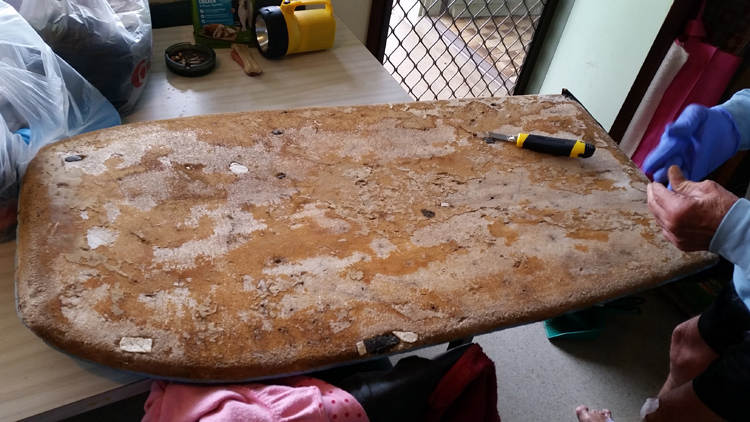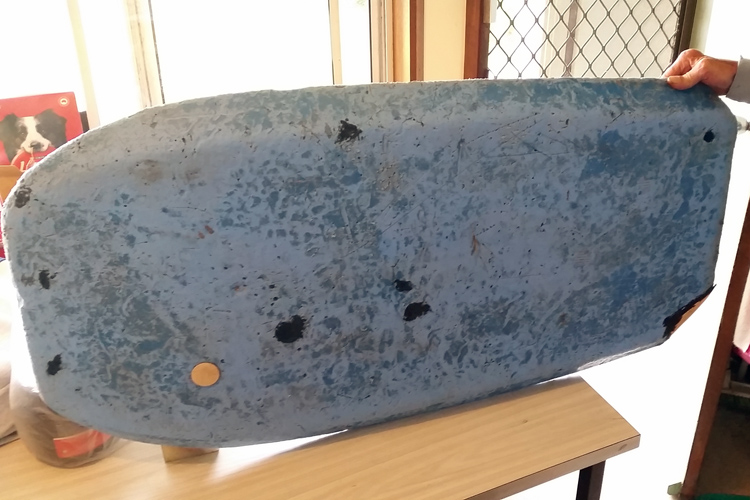Everyone who owns a Morey Boogie board is a proud rider. The only reason these planks haven't been put aside in a sports museum is that thousands of bodyboarders still use them across the globe.
For many riders, the famous bodyboard model developed by Tom Morey in 1971 is a backup board.
It is widely considered a de-facto relic that can be ridden in the harshest conditions. If it's not in the best shape, you can always fix the dings.
SurferToday reader James Mabey has an interesting story to share with us.
Recently, he found a very old Morey Boogie with which he had fun back in the day. James wanted to know more about his classic boogie board sitting in the attic for 14 years.
"My dad bought one of the 12 handmade Moreys from Brad Wallace in Maroubra. Roughly in 1975. Shortly after, the contract was sold to Hanimex and went into mass production," reveals Mabey.
"Growing up, we always took the old demon to the beach, and I have fond memories of it. It was neglected by us kids, as we had no idea what sort of Australian surf history we had."
"I have been trying to find information on re-skinning the board - the glue to use and the rest of it - but after hours of research, I have come up with minimal useful info."

Keep It Intact
SurferToday thought it was the perfect mission for special agent Tom Morey. The inventor of the Morey Boogie. The man who created a new water sport from scratch.
So, what should James do to save an old plank and get it back in the waves, Mr. Morey?
"James: the skins were glued on with regular contact cement from any hardware store. That is solvent-based, not water-based," explains Tom Morey.
"Where to get skins these days, I don't know, but great boards were made in Hawaii - for example, Turbo by Russ Brown - upholstering the core with glossy vinyl-faced fabric."
"The spray adhesive would be something like Scotch 99, or whatever is the professional grade used to deal with the special problems associated with vinyl, always giving off a gas that dissolves the bond. Pay whatever it takes."
So, if you own a Morey Boogie, don't sell it. And don't trash it - never.
If it needs repairs, do it properly, and keep the classic wave riding machine intact and ready to ride.
